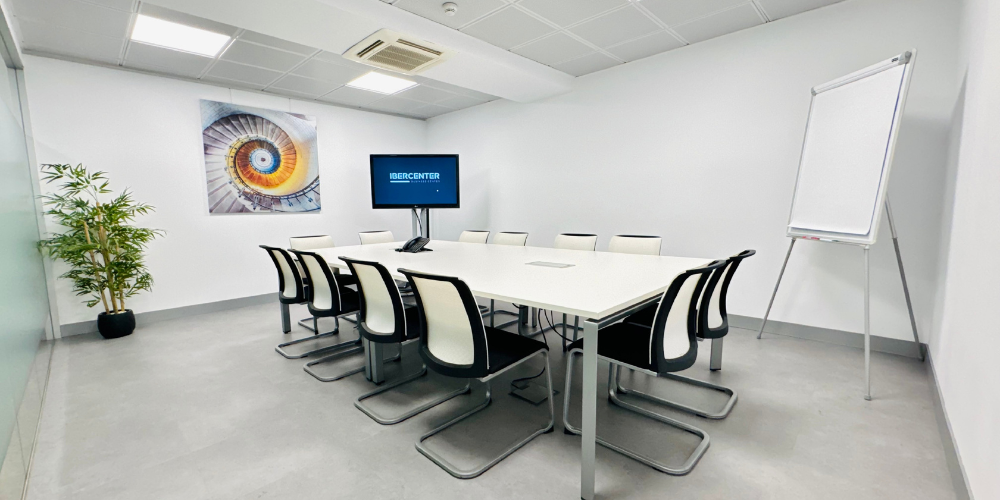In the current era, where flexible working and employee wellbeing have become priorities for many companies, concepts such as workation and teleworking have gained prominence. Although both terms are related to the possibility of working outside the traditional office, there are key differences that are important to understand in order to make the most of their benefits. This article looks at the definition and characteristics of both workation and teleworking, analysing their advantages and disadvantages from the perspectives of employees and employers.
In addition, we will explore the essential differences between these two approaches to work, considering aspects such as location, technological requirements, and the impact on productivity and organisational culture. We will also examine current trends and the future of both modalities in a rapidly evolving work environment. As we move forward, we will provide examples and use cases that illustrate how companies are implementing these practices to adapt to the new dynamics of work.
From our office rental centre in Madrid we would like to clarify two terms that can sometimes be confused, don’t miss out!

What is workation?
Workation is a concept that has gained prominence in recent years, especially in an increasingly digitalised and globalised world. The term, which arises from the fusion of the English words work and vacation, refers to the practice of working from a holiday spot, thus combining work responsibilities with the enjoyment of a different environment than usual. Although it may seem a recent idea, its origin is linked to the increasing adoption of technologies that allow remote working and the need to find a balance between personal and professional life.
In essence, workation offers a flexible working environment, allowing employees to perform their duties from attractive destinations beyond the four walls of an office or their home. Flexibility is one of the cornerstones of this modality, as it involves not only freedom in the choice of location, but also in time management. By being able to change environments, employees can revitalise themselves and find new sources of inspiration, which often results in increased creativity and productivity.
One of the most outstanding features of workation is the combination of work and leisure. It is not simply about working from a tourist destination, but about integrating moments of rest and recreation into the working day. Employees can enjoy recreational activities, explore new places, or simply relax in their free time, while still fulfilling their professional obligations. This approach promotes a healthy work-life balance, which can result in greater job satisfaction and overall well-being.
For employees, workation offers a unique opportunity to break away from routine and find a new balance between their work responsibilities and their personal life. The possibility of working from a pleasant place, surrounded by new experiences, can be a great incentive to improve morale and motivation. From an employer’s perspective, this can be beneficial by encouraging talent retention, increasing employee satisfaction and, in some cases, even improving productivity. It also allows companies to demonstrate their commitment to the well-being of their employees, which can strengthen their reputation and attract new talent.
What is telework?
Teleworking, also known as remote working, is a form of work that allows employees to perform their duties from any location outside the traditional office, using information and communication technologies. Although this way of working has been around for decades, its adoption has seen significant growth in recent years, driven in large part by the evolution of digital tools and, more recently, by the COVID-19 pandemic, which forced many companies to adapt quickly to this new reality.
Throughout its evolution, telework has evolved from being a limited option, available only to certain sectors, to becoming common practice in a wide variety of industries. This transition has been made possible by the availability of technologies such as high-speed Internet connectivity, video conferencing platforms, online collaboration tools and project management software. These tools allow employees to stay connected and productive regardless of their location, and employers to manage distributed teams effectively.
One of the key features of teleworking is the stability it offers in the working environment. Unlike workation, where the workplace can be constantly changing, teleworking usually involves a fixed and controlled space, such as a home office or a coworking space in Madrid. This stable environment allows employees to establish routines and structures that favour concentration and long-term productivity. In addition, the familiarity of the environment helps to reduce stress and increase comfort, both of which are crucial to well-being at work.
Telework brings numerous benefits for both employees and employers. For employees, it offers greater flexibility in time management and the possibility to better reconcile work and personal life, eliminating or reducing commuting and allowing greater autonomy in the organisation of their tasks. This can not only improve quality of life, but also increase motivation and commitment to the company.
From the employer’s point of view, teleworking can result in greater operational efficiency, reduced costs associated with maintaining physical offices and wider access to talent by allowing people to be recruited from different regions without the need for them to relocate.
In short, teleworking has transformed the way we understand and carry out our work, offering an alternative that combines flexibility with stability and responds to the demands of a constantly changing world of work.
Key differences between Workation and Teleworking
Workation and telework are two modalities that share the characteristic of allowing employees to work outside the traditional office, but differ significantly in several key aspects, such as location, flexibility, work objectives, impact on productivity, technological requirements and legal and labour implications.
Location and flexibility are the first notable differences between workation and teleworking. In teleworking, the employee usually establishes a fixed location from which he or she performs his or her duties, such as at home or in a coworking space. This stable environment facilitates the creation of a daily routine and a familiar working environment.
On the other hand, workation involves much greater mobility, as it allows employees to work from a variety of destinations, often with the intention of combining work with leisure and enjoyment in places normally associated with holidays. It offers greater flexibility in terms of choice of work location, but may involve greater adaptation to different environments.
In terms of work objectives and approach, telework focuses on maintaining continuity and productivity within a regular work framework, allowing tasks to be performed in a consistent and predictable manner. Employees continue to fulfil their job responsibilities as they would in an office, but with the advantage of doing so from a more convenient location. In contrast, workation takes a more hybrid approach, seeking not only to fulfil work obligations, but also to take advantage of the experience of being in a new environment to recharge, find inspiration and balance work with leisure time. This approach can be particularly useful in creative jobs or in periods when a boost of motivation is needed.
The impact on productivity also varies between the two. In teleworking, the stability of the environment and the ability to establish solid routines often lead to consistent and even higher productivity than could be achieved in a traditional office. However, in workation, productivity can fluctuate depending on the environment and how time is managed between work and leisure activities.
While some employees may find that a change of scenery stimulates their creativity and efficiency, others may be easily distracted by the opportunities for entertainment and relaxation offered by their chosen workplace.
In terms of technology and infrastructure requirements, teleworking generally requires a basic but robust set of tools, such as a reliable Internet connection, a suitable computer, and access to online collaboration and communication platforms. These elements are essential to ensure that work is performed without interruption, regardless of the employee’s location.
On the other hand, workation can present additional challenges, as employees may find themselves in locations with limited internet access or less reliable technological infrastructure. In addition, greater adaptability is required to work in less conventional environments, which may imply the need for more versatile or portable tools.
Finally, the legal and employment implications also differ between workation and telework. Teleworking, being more established and regulated, has a clearer legal framework in terms of rights, responsibilities and working conditions, including aspects such as workplace safety, working hours and data protection.
In contrast, workation, being a newer and less formalised modality, can present legal challenges related to the jurisdiction in which the work is performed, insurance coverage and the application of labour regulations, especially if the work is performed abroad or in places where local laws differ significantly from those of the employer’s home country.
In summary, while telework offers a more predictable and structured environment, ideal for job continuity and stability, workation introduces greater flexibility and the possibility to combine work and leisure, which can be beneficial for motivation and well-being, but also presents unique challenges in terms of productivity, infrastructure and regulations.
Impact on organisational culture
The impact of work arrangements such as workation and teleworking on organisational culture is profound and multifaceted. Both options offer flexibility and new ways of working, but also pose challenges that can influence communication, collaboration, team morale and work-life balance.
Influencing communication and collaboration is one of the most salient aspects when introducing modalities such as workation and teleworking in an organisation. In a traditional work environment, communication flows naturally through face-to-face interactions, spontaneous meetings and constant access to co-workers. However, with telework, and even more so with workation, communication tends to become more dependent on digital tools, which can create a barrier to smooth collaboration.
While video conferencing, instant messaging and online collaboration platforms have come a long way, the lack of physical interaction can make it difficult to build strong working relationships and convey ideas efficiently. In addition, in workation, time differences and possible technological limitations in certain locations can add an extra layer of complexity to effective communication.
The effects on team morale are also significant. In telework, the absence of a common environment can lead to feelings of isolation among employees, affecting team cohesion and, in some cases, diminishing the sense of belonging to the organisation. However, when well managed, telework can increase job satisfaction by offering employees greater autonomy and a better work-life balance.
On the other hand, workation can have a positive impact on individual morale, as it allows employees to enjoy new experiences while working, which can revitalise their energy and creativity. However, if not properly balanced, workation can lead to disparities in the team, especially if some employees do not have access to the same opportunities to work from attractive destinations, which could create tensions or feelings of inequality.
The implications for work-life balance are another crucial aspect of organisational culture. Teleworking, by allowing employees to work from home or from locations of their choice, facilitates greater flexibility in managing personal and work responsibilities. This can result in a better work-life balance, provided that clear boundaries are established and the tendency to “hyper-connectivity” or working longer hours than would be the case in a traditional office is avoided.
In contrast, workation offers a more direct integration between work and leisure, allowing employees to enjoy recreational activities in their free time while in a holiday environment. While this may seem ideal for maintaining a good balance, it can also blur the lines between work and rest, which could lead to less disengagement and eventually burnout if not managed carefully.
In short, both workation and telework transform organisational culture in ways that can be beneficial if implemented and managed correctly. However, they also present challenges that companies must address to ensure that communication and collaboration do not suffer, that team morale remains high, and that work-life balance is sustainable for all employees.
Adapting organisational policies and practices to support these working arrangements is crucial to reap their benefits while mitigating potential drawbacks.
Conclusion
In conclusion, both workation and telework represent modern and flexible approaches to working outside the traditional office, but differ in key aspects that may influence their appropriateness in different contexts. Workation is characterised by mobility and the combination of work and leisure, offering a revitalising experience that can enhance creativity and personal satisfaction.
However, it can present challenges in terms of productivity and coordination, especially when it comes to team communication and collaboration. On the other hand, teleworking offers a stability and structure that facilitates long-term concentration and efficiency, with a more controlled working environment and established tools for remote management, although it can affect team cohesion if social aspects are not properly managed.
The choice between workation and teleworking will largely depend on the type of work, the objectives of the team and the individual needs of the employees. For projects that require innovation and a change of perspective, workation may be the ideal option, providing an inspiring environment and an enriching experience. For tasks that demand continuity, focus and high coordination between teams, teleworking offers a more solid and predictable framework.
For companies, it is crucial to consider both the advantages and challenges of each modality and how they align with their organisational culture and business objectives. They must also ensure that they provide the resources and support necessary for employees to make the most of these options, whether by providing the right technology tools, promoting effective communication or even offering solutions such as room hire in Madrid for face-to-face meetings when necessary.
For employees, it is important to assess how each mode impacts their productivity, well-being and work-life balance, and to choose the option that best suits their circumstances and preferences.
In short, flexible working is a valuable resource that, if well managed, can benefit both companies and employees, allowing them to adapt to a constantly changing work environment and achieve optimal performance without sacrificing quality of life.
Business centre in Madrid Ibercenter




